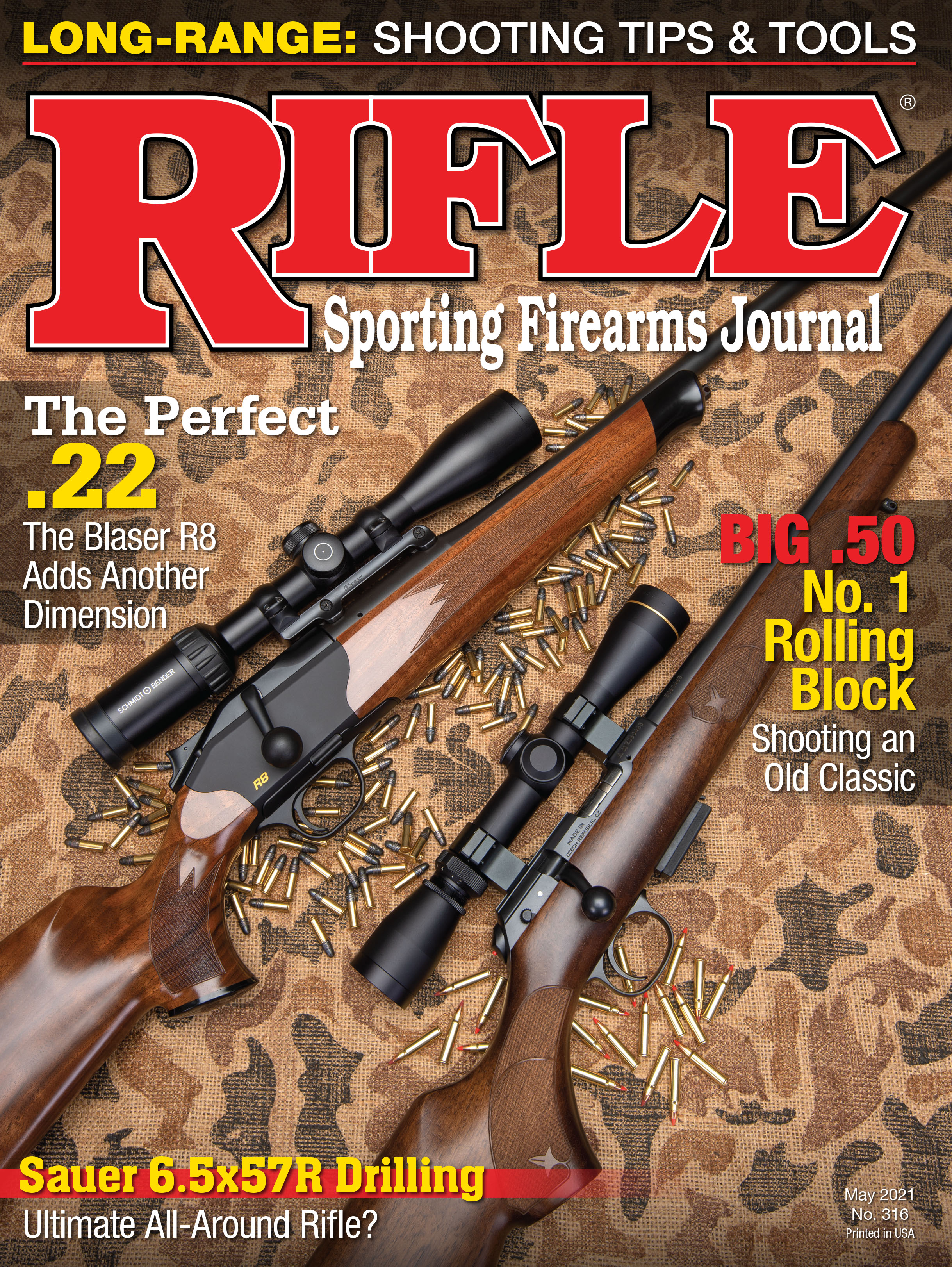Down Range
The First Assault Rifle
column By: Mike Venturino | May, 21
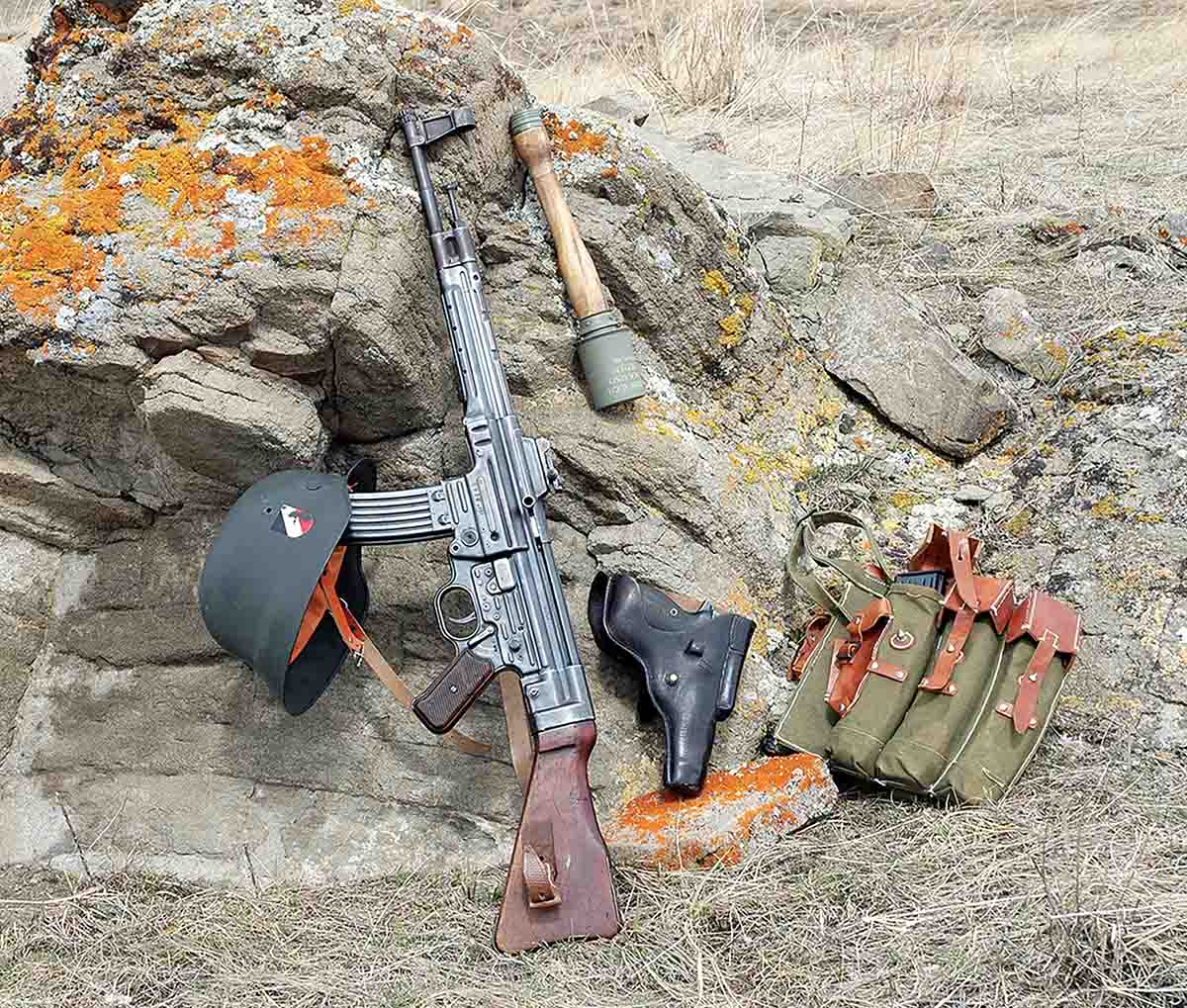
There is a book in print titled THE GUN by C.J. Chivers that details in depth the history of such guns going all the way back into the nineteenth-century and finishing with the so-called Kalashnikov, otherwise known as the AK or AK-47. Chivers notes that the AKs and AR-15-type rifles sold commercially in the United States are faux assault rifles, for they only have semi-automatic function. Real ones have select fire; semi-auto or full-auto at the flick of a switch or press of a button. I recommend that book to anyone interested in the subject because it is extremely well researched and documented.
Germany gets the award as the first nation to develop an assault rifle. It was a product of the C.H. Haenel Company in the city of Suhl. The director of that firm was Hugo Schmeisser, who was also its chief designer. Interestingly, Schmeisser had nothing to do with designing Germany’s MP38/MP40 9mm submachine guns (machine pistols in their terminology). However, to American troops in World War II, his name became synonymous with them.
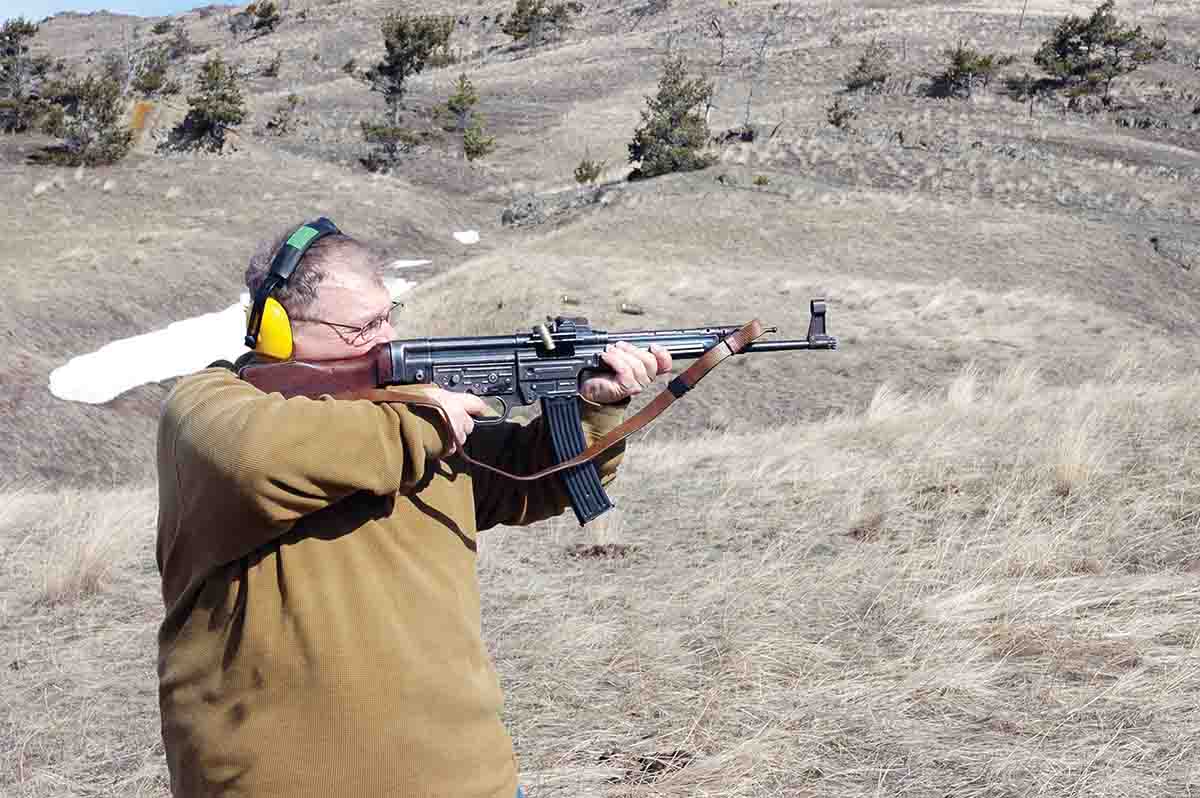
One might be inclined to think that a “Storm Rifle” capable of full-auto fire would be light in weight so that more ammunition could be carried. That was a benefit of the U.S. M16 5.56mm during the Vietnam War. Veterans have told me they carried as many as 400 rounds of the small cartridge when on patrol. The Sturmgewehr certainly is not lightweight at 11 pounds unloaded. A German soldier’s combat load was six 30-round magazines with one in the rifle. Twenty five-round magazines were proposed but did not get into production by the war’s end.
Regardless of the exact name of the first assault rifle, it had a 16-inch barrel and an overall length of 37 inches with a gas piston above the barrel. The buttstock was wood with a steel buttplate. The rest of the rifle was steel, much of it stamped, not milled. With the top-mounted gas piston, sights had to set very high. The ejection port on the receiver’s right side had a steel cover, which flipped open as the bolt was retracted. A hinge at the front allows the receiver to tip up at the rear for bolt removal. It is locked down at the rear by a cross pin. Switching from semi-auto to full-auto function is done by merely pressing a button. Magazines were not designed to hold the bolt open after all rounds were fired, which seems odd.
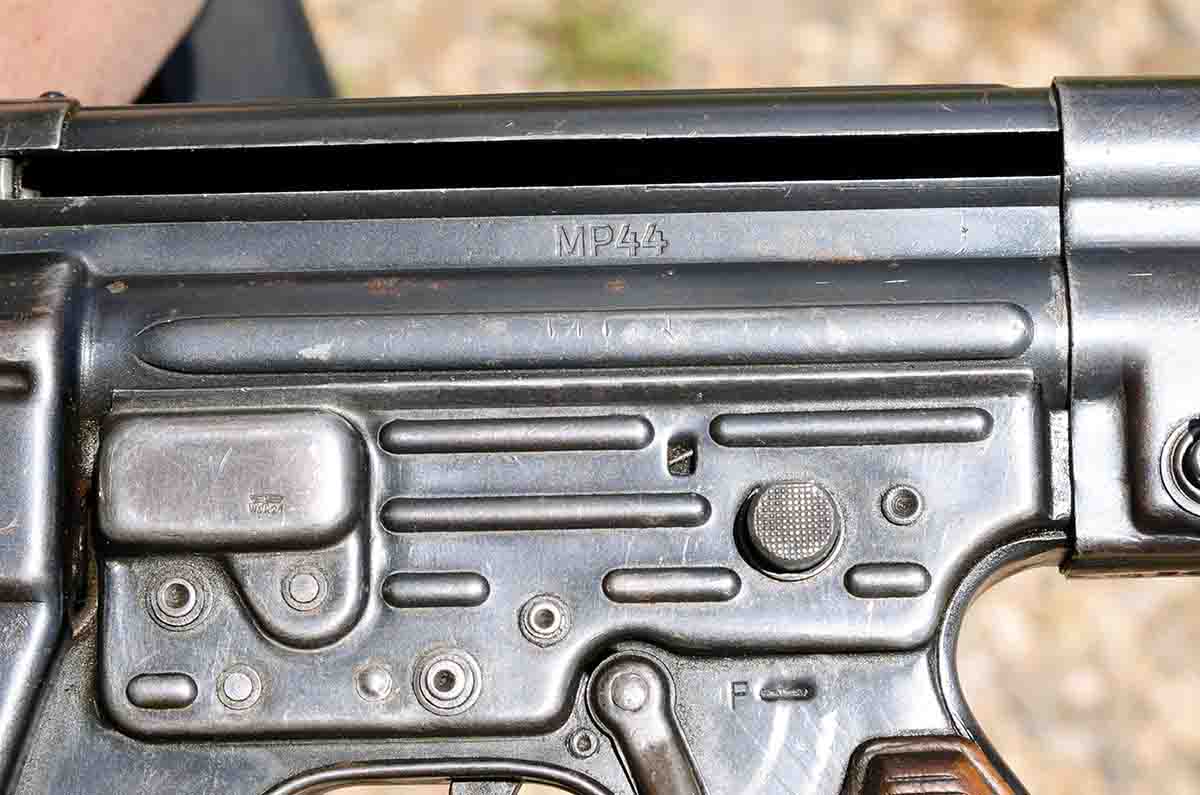
There was one other development that was necessary for the success of Germany’s new assault rifle. That was its cartridge. A shoulder-fired machine gun called the FG42 had already been tried, mostly in the hands of Falschirmjagers (airborne troops). It fired Germany’s standard infantry rifle cartridge, the 7.92x57mm with 198-grain bullet at approximately 2,500 feet per second (fps). It was virtually uncontrollable in full-auto fire, as American ordnance officers also learned years later with the M14 and its 7.62x51mm NATO rounds using 150-grain bullets at 2,700 fps.
The first assault rifle cartridge is now called an “intermediate” type. The Germans kept things fairly simple: the bullet was still 7.92mm (.323 inch) in diameter but weighed only 123 grains. Case length was reduced to 33mm (1.299 inches) compared to 57mm (2.244 inches) but the case head remained the same. (It’s also the same as the .30-06.) Velocity was reduced to approximately 2,300 fps. With its reduced recoil, full-auto fire was much more controllable. Semi-auto fire was considered effective to 400 meters. The cartridge name therefore was 7.92x33mm Kurz (short). The savings in strategic metals with the smaller case and lighter bullet must have been in countless tons, especially considering that in January, 1944, German officials proposed a monthly goal of 200,000,000 rounds of 7.92x33mm. (It is doubtful if that goal was ever met.)
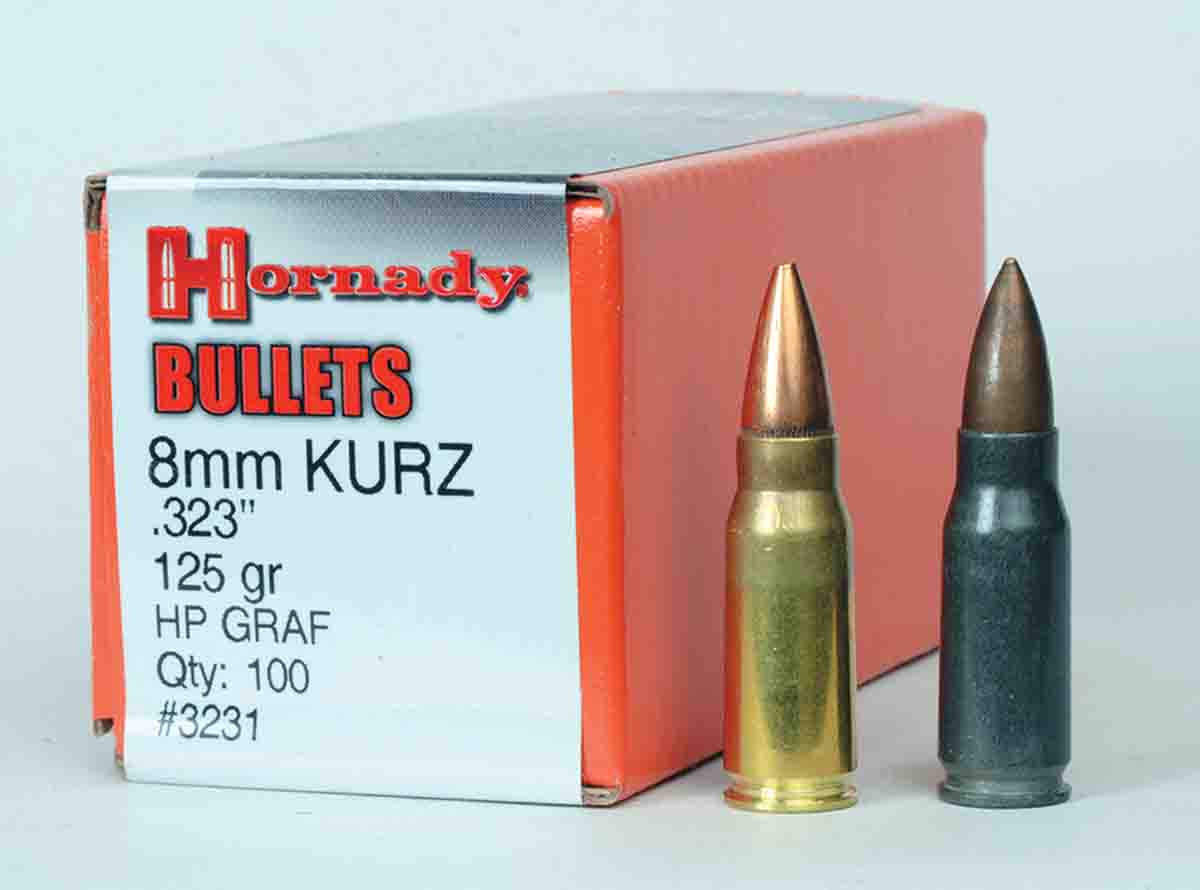
Powders suitable for reloading 7.92x33mm are fairly limited. They must be fairly fast burning in regard to rifle propellants. I’ve worked with IMR-4227, Lil’Gun and Vihtavuori N120. All were suitable, but 19 grains of Lil’Gun gave velocity of about 2,100 fps with perfect functioning. German military specs called for a cyclic rate of 500 rounds per minute (RPM). As chronographed by a PACT IV device, my chosen load gave 490 RPM.
Germany produced over 400,000 Sturmgewehrs by war’s end, with most of them going to the Eastern Front. C.J. Shivers points out in his aforementioned book that Hugo Schmeisser was captured by the Soviets in 1945 and spent 10 years working in the same facility where Kalashnikov supposedly developed his AK. One must wonder what Schmeisser’s duties were during that time.


